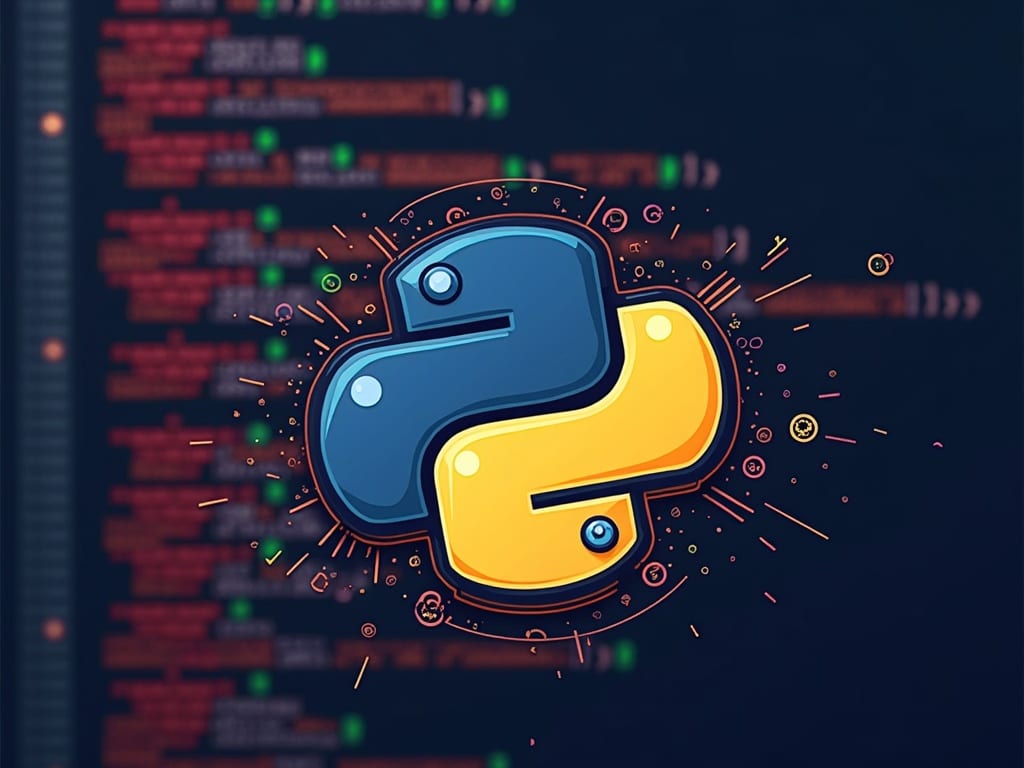Demystifying Python Built-in Functions: Your Essential Guide
Imagine Python as a vast, well-organized workshop. You, the programmer, are the craftsman. To build magnificent things, you need the right tools. Python’s built-in functions are precisely those tools – readily available, pre-sharpened, and waiting for you to unleash their power. Forget rummaging through toolboxes; these functions are always at your fingertips, ready to streamline your code and elevate your projects. This article delves deep into the world of Python’s built-in functions, providing you with the knowledge to wield them effectively.
What are Python Built-in Functions?
Built-in functions are pre-defined functions that are readily available in Python without requiring any import statements. Think of them as essential commands baked directly into the Python language itself. These functions cover a broad spectrum of tasks, from basic data manipulation and type conversions to input/output operations and much more.
Unlike functions you define yourself or those found in external libraries, built-in functions are always accessible. This makes them incredibly convenient and efficient for everyday programming tasks. Learning to use them effectively is paramount for any Python developer.
Why are Built-in Functions Important?
Mastering Python’s built-in functions offers several advantages:
- Efficiency: They are optimized for performance, often written in C, making them faster than equivalent Python code.
- Readability: Using built-in functions makes your code more concise and easier to understand. They express common operations in a clear, standardized way.
- Convenience: They are always available, eliminating the need to import modules for basic tasks.
- Foundation: They form the bedrock of more complex Python programming concepts and libraries.
Essential Built-in Functions: A Comprehensive Overview
Let’s explore some of the most commonly used and valuable built-in functions in Python, categorized for clarity.
Core Functions
These functions are fundamental to almost every Python program.
print(): Displays output to the console. The workhorse of debugging and user interaction. Try:print(Hello, world!)len(): Returns the length (number of items) of an object (e.g., string, list, tuple). Essential for iterating and managing data structures. Example:len(Python)returns 6.type(): Returns the type of an object. Crucial for understanding data types and debugging. Example:type(10)returns<class 'int'>.input(): Reads a line from input, converts it to a string, and returns it. Allows you to get user input. Example:name = input(Enter your name: )open(): Opens a file and returns a file object. The gateway to file I/O. Example:file = open(my_file.txt, r)
Type Conversion Functions
These functions are essential for converting data from one type to another.
int(): Converts a number or string to an integer. Example:int(123)returns 123.float(): Converts a number or string to a floating-point number. Example:float(3.14)returns 3.14.str(): Converts an object to a string. Example:str(123)returns 123.list(): Converts an iterable (e.g., string, tuple, set) to a list. Example:list(hello)returns['h', 'e', 'l', 'l', 'o'].tuple(): Converts an iterable to a tuple. Example:tuple([1, 2, 3])returns(1, 2, 3).set(): Converts an iterable to a set (an unordered collection of unique elements). Example:set([1, 2, 2, 3])returns{1, 2, 3}.dict(): Creates a dictionary. Accepts various forms of input. See examples below for more detail.
Example of dict() usage:
# From a list of tuples
my_dict = dict([('a', 1), ('b', 2)]) # Output: {'a': 1, 'b': 2}
# From keyword arguments
my_dict = dict(a=1, b=2) # Output: {'a': 1, 'b': 2}
Mathematical Functions
These functions perform basic mathematical operations.
abs(): Returns the absolute value of a number. Example:abs(-5)returns 5.pow(): Returns the value of x to the power of y (xy). Example:pow(2, 3)returns 8.round(): Rounds a number to a specified number of decimal places. Example:round(3.14159, 2)returns 3.14.max(): Returns the largest item in an iterable or the largest of two or more arguments. Example:max([1, 5, 2, 8])returns 8.min(): Returns the smallest item in an iterable or the smallest of two or more arguments. Example:min([1, 5, 2, 8])returns 1.sum(): Returns the sum of all items in an iterable. Example:sum([1, 2, 3, 4])returns 10.
Sequence Manipulation Functions
These functions operate on sequences like lists and tuples.
sorted(): Returns a new sorted list from the items in an iterable. Does not modify the original list. Example:sorted([3, 1, 4, 1, 5, 9, 2, 6])returns[1, 1, 2, 3, 4, 5, 6, 9].reversed(): Returns a reverse iterator. Needs to be converted to a list or other iterable to view the results directly. Example:list(reversed([1, 2, 3]))returns[3, 2, 1].enumerate(): Returns an enumerate object, which yields pairs of (index, value) for each item in an iterable. Useful for looping with index access.zip(): Returns an iterator of tuples, where the i-th tuple contains the i-th element from each of the argument sequences or iterables.
Example of enumerate() usage:
my_list = ['a', 'b', 'c']
for index, value in enumerate(my_list):
print(fIndex: {index}, Value: {value})
# Output:
# Index: 0, Value: a
# Index: 1, Value: b
# Index: 2, Value: c
Example of zip() usage:
names = ['Alice', 'Bob', 'Charlie']
ages = [25, 30, 28]
zipped = zip(names, ages)
print(list(zipped)) # Output: [('Alice', 25), ('Bob', 30), ('Charlie', 28)]
Object Inspection Functions
These functions provide information about objects.
dir(): Returns a list of valid attributes and methods of an object. Invaluable for exploring modules and classes. Example:dir(list)will show you all the methods available for list objects.help(): Invokes the built-in help system. Displays documentation for objects, functions, modules, etc. Example:help(print)will show you the documentation for theprint()function.isinstance(): Checks if an object is an instance of a specified class or type. Example:isinstance(5, int)returnsTrue.callable(): ReturnsTrueif the object argument appears callable (i.e., is a function, method, class with a__call__()method, etc.),Falseif not.
Other Useful Functions
map(): Applies a function to all items in an input list.filter(): Constructs an iterator from elements of an iterable for which a function returns true.range(): Generates a sequence of numbers. Frequently used in loops. Example:range(5)generates numbers from 0 to 4.eval(): Evaluates a string as a Python expression. Use with caution due to potential security risks if the string comes from untrusted sources.exec(): Executes a string as a Python program. Treat with similar care toeval().
Example of map() usage:
numbers = [1, 2, 3, 4, 5]
squared = map(lambda x: x**2, numbers)
print(list(squared)) # Output: [1, 4, 9, 16, 25]
Example of filter() usage:
numbers = [1, 2, 3, 4, 5, 6]
even_numbers = filter(lambda x: x % 2 == 0, numbers)
print(list(even_numbers)) # Output: [2, 4, 6]

Advanced Usage and Considerations
While the basic usage of built-in functions is straightforward, there are nuances to consider for advanced applications.
Lambda Functions and Built-ins
Lambda functions (anonymous functions) often pair beautifully with built-in functions like map(), filter(), and sorted(), allowing for concise and expressive code.
Example: Sorting a list of dictionaries by a specific key:
data = [{'name': 'Alice', 'age': 25}, {'name': 'Bob', 'age': 30}, {'name': 'Charlie', 'age': 28}]
sorted_data = sorted(data, key=lambda x: x['age']) # Sort by age
print(sorted_data)
# Output: [{'name': 'Alice', 'age': 25}, {'name': 'Charlie', 'age': 28}, {'name': 'Bob', 'age': 30}]
Generator Expressions and Built-ins
Generator expressions provide a memory-efficient way to create iterators, which can be used with built-in functions like sum(), max(), and min() .
Example: Calculating the sum of squares of even numbers in a range:
sum_of_squares = sum(x**2 for x in range(10) if x % 2 == 0)
print(sum_of_squares) # Output: 120 (0 + 4 + 16 + 36 + 64)
Performance Implications
Built-in functions generally offer excellent performance. However, be mindful of their behavior with very large datasets. For instance, while sum() is convenient, using NumPy’s np.sum() might be more efficient for extremely large numerical arrays.
Common Pitfalls and How to Avoid Them
Even with their simplicity, there are common mistakes to watch out for when using built-in functions.
- Incorrect Data Types: Ensure that the data you pass to a built-in function is of the expected type. TypeErrors are common when passing inappropriate data.
- Mutable Defaults as Arguments: Avoid using mutable objects (like lists or dictionaries) as default arguments in function definitions. This can lead to unexpected behavior due to shared references.
- Shadowing Built-in Names: Be careful not to accidentally redefine a built-in function name with your own variable or function. This can lead to confusion and errors.
- Ignoring Return Values: Many built-in functions return a value. Make sure you’re capturing and using that value if it’s needed. For example,
sorted()returns a *newsorted list; it doesn’t modify the original.
The Ever-Evolving Python Landscape
Python is a dynamic language, and new built-in functions may be added in future versions. Stay updated with the latest Python documentation to discover new tools and techniques that can enhance your programming skills.
Conclusion
Python’s built-in functions are the bedrock of efficient and readable code. By mastering these essential tools, you’ll be well-equipped to tackle a wide range of programming challenges. So, dive in, experiment, and unlock the full potential of Python’s built-in arsenal. Happy coding!
